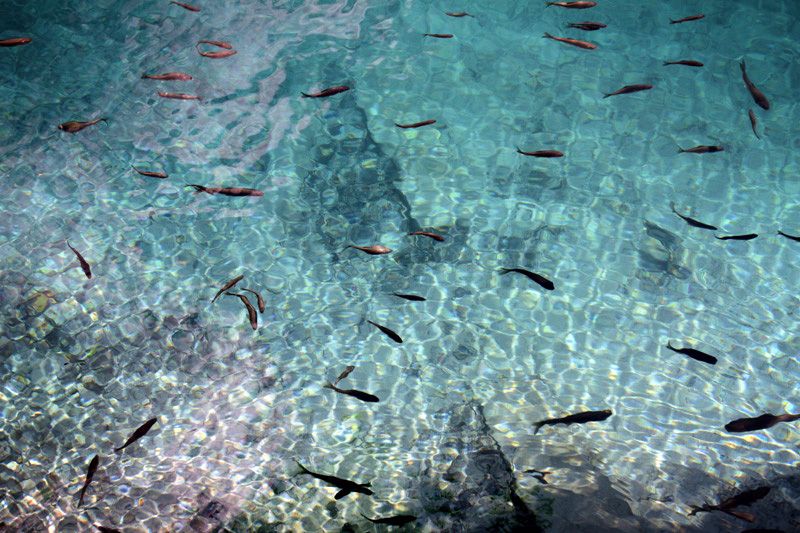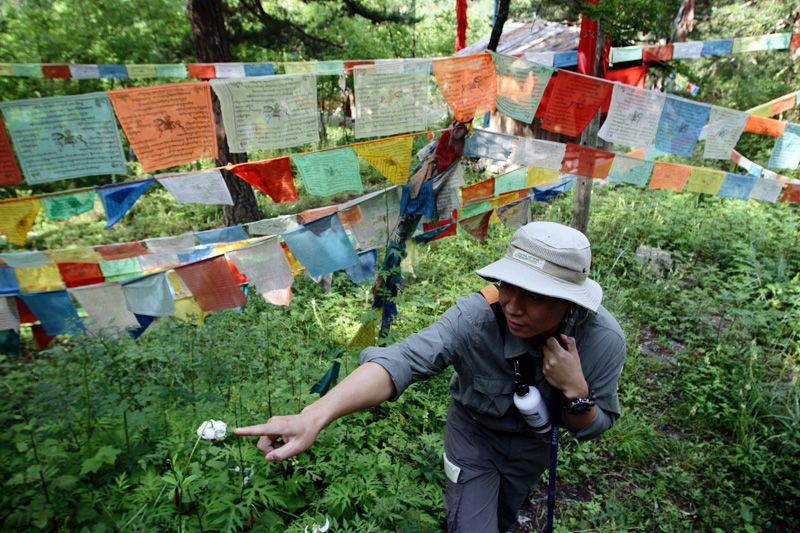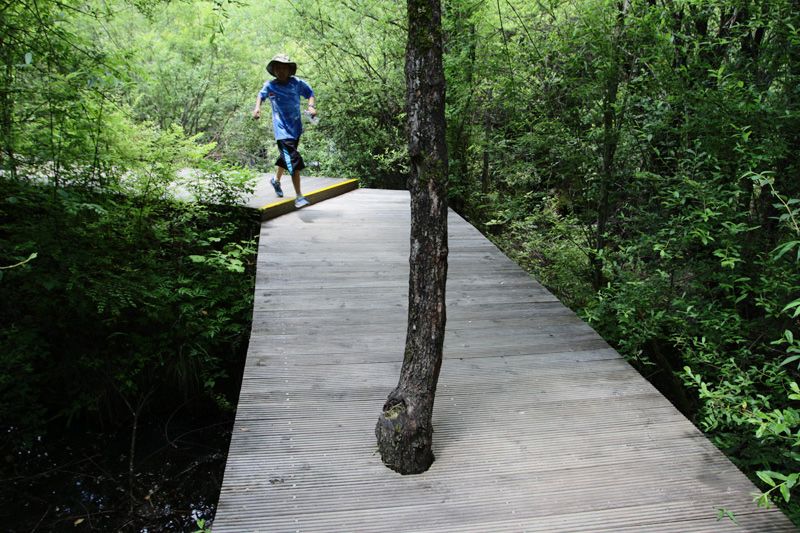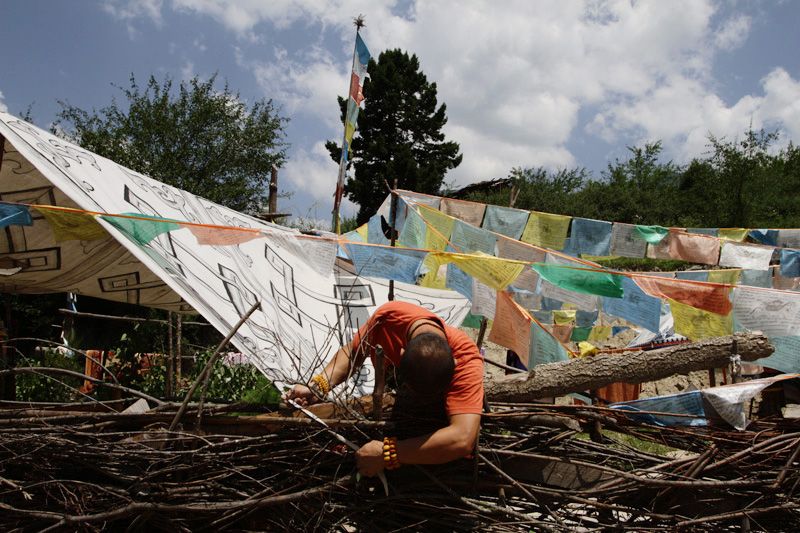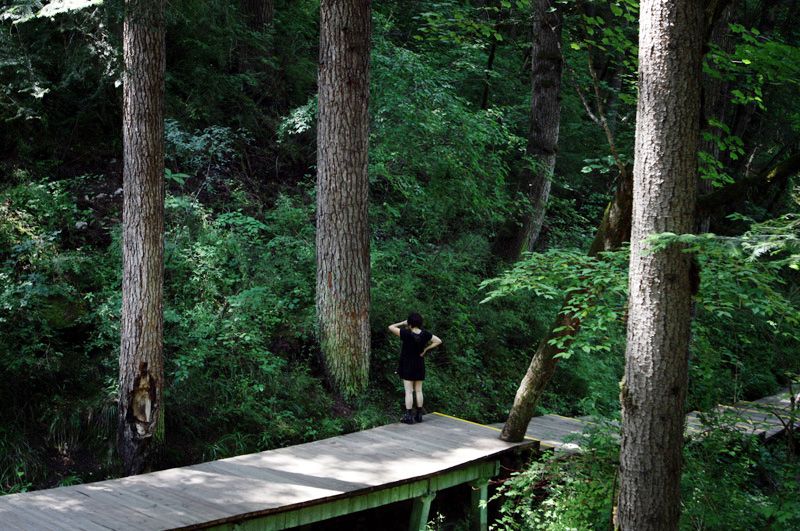"Is it always like this?" I ask one of the park wardens, as I weave my way through the hundreds of tourists, all shuffling to get into the regimented lines funneling them into the park's gates. "Well, this is peak season. There could be up to 10,000 people going into the park today," he replies. This is the definition of mass tourism and it is taking place before me on a warm July morning in the mountains of northern Sichuan, at the gates of one of the country's most famous tourist destinations, the Jiuzhaigou National Park.
Nestled high in the remote mountains of northern Sichuan, the Jiuzhaigou National Park is a spectacular area composed a series of valleys, containing a myriad of breathtaking turquoise lakes, rivers and waterfalls. They are surrounded by temperate broad-leaf forests that are home to the giant panda, red panda and golden monkey, among many other species. Its topography has been shaped over millennia by tectonic activity and glacial erosion which has created an entrancing visual setting.
It is this unique setting that has caused the rise in popularity of this park since the early 1990s, when it was awarded Unesco World Heritage status. Since then, visitor numbers have increased year by year. In 2007, it was estimated that 2.5 million people visited the Jiuzhaigou Park.
As tourists enter, they are bused between popular locations within the boundaries of the protected area. They regularly stop to jump off the buses, take pictures and then immediately return to their transportation to continue to the next spot. Their movements are tightly restricted to boardwalks which result in surprisingly little direct impact to the local ecosystems. The relatively small 720 sq. km. of valleys that make up the park, are arguably the best protected in the whole of China.
The challenges lie in the immediate vicinity to the park which accommodates the thousands of tourists who descend each day. The majority reside in hotels that line the streets of the small village of Pengfeng, just outside the park. At times, this small village seems to be at bursting point as noisy buses hurtle constantly along the narrow mountain roads and the throngs of tourists shuttle between their hotels, restaurants, souvenir shops and ultimately the park entrance.
This is a small part of China's "Western Development Strategy" which was introduced in 1999 and formally started in 2000 by the country's State Council. The aim of the strategy is to help the underdeveloped western provinces of the country catch up with the more prosperous ones in the East. This race to catch up has caused concerns among the environmental community as rushed developments compromise local ecosystems, especially the remaining forested regions of the southwest of China.
"At stake are some of the most valuable scenic sites and endemic flora and fauna in China together with critical hydrological services affecting the supplies of the Yangtze River, flood and erosion control and prevention of landslides," according to a study by the EU-China Biodiversity Program.
Up until 1998, when China's nationwide logging restrictions came into effect, many of the region's forests were still being severely depleted. "In 1997, I travelled to Jiuzhaigou," said Lu Chunming of the United Nations Development Program. "At that time you could see many farmers cutting trees. They floated them down the river. There were so many that the river was full. When I asked why they were doing this, the farmers said because the ban was coming, they were cutting down as many trees as possible." Attitudes towards the environment, especially towards the region's forests, have been hard to change in the minds of those who see them as more of a resource than an area to protect.
Small inroads are being made, led by a new eco-tourism program that is in its early stages of development at Jiuzhaigou. Small groups of tourists are taken into one of Jiuzhaigou's off-limit valleys to experience the area in its natural form. This one valley alone contains 40 percent of China's total plant species, reenforcing the fact that this region is one of the country's and world's biodiversity hotspots.
"I believe we are responsible for educating the people that come here. It is a challenge because the level of awareness of a lot of these people is quite low. They don't fully understand the importance of the ecosystem," said Kieran Fitzgerald, referring to the "mass" tourists. Fitzgerald is an advisor who works for the park, helping to promote the fledgling eco-tours. "I think it's one of the responsibilities of a national park to educate visitors on the environment, the importance of the environment and just to give them a sense of appreciation."
With up to 10,000 visitors each day, it's a huge challenge for the park, especially as the vast majority of visitors seem to opt for the mass tourism experience rather than the eco-tours. However, if only a small percentage of the "mass" visitors can be reached, perhaps over time, attitudes can be changed. "My main hope is that we can continue to develop tourism here sustainably. Sustainability is the only option and sustainable development is the only option. That's why eco-tourism is so important," said Fitzgerald.
The worry is that environmental education might not be the priority at Jiuzhaigou. With each visitor paying approximately 300 RMB ($46) per ticket, annual revenues from ticket sales alone are about $90 million. This is a well-oiled revenue generating machine and is obviously a key part of the Western Development Strategy and Sichuan Province's continued economic development.
For the sake of the region's ecosystems, it can only be hoped that environmental awareness, education and protection can become equal priorities in the area's future development. If not, then a huge opportunity will have been missed to inform and educate the public about protecting these vital and precious ecosystems in the southwest of the country.


